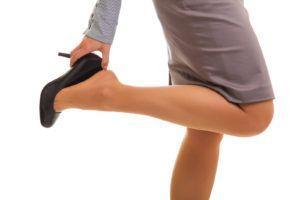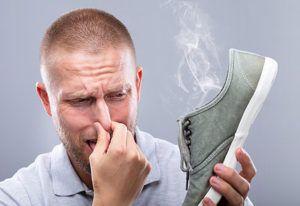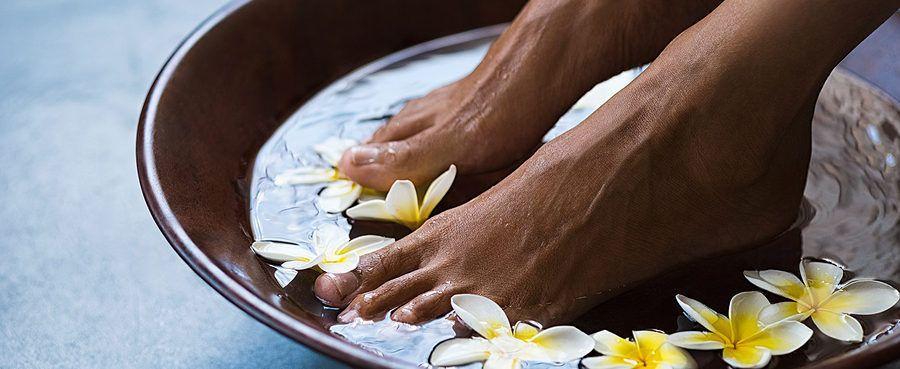In what follows, we highlight 6 tips that will help you prepare your feet for a healthy and productive work life.
Most employees give hardly a second thought to their feet. Only a relatively small percentage of the human population, after all, is affected by foot problems, with most of these occurring due to lack of awareness about proper foot care, neglect, and choosing ill-fitting shoes. Yet equally, the general state of our feet is key to a healthy work life in which employees can move around freely and with ease. Foot pain and discomfort resulting from bad posture or poor shoe choices in the office can have cumulative and long-lasting effects on our general health and wellbeing, in turn affecting our ability to concentrate and get on with our work productively.
As we begin to ease into the post-pandemic work, awareness about foot health is especially important. Many employees are thinking about incorporating their daily commute into at least some of the working week, and generally getting out and about more. This means that they are going to have to get used to wearing formal footwear that has been gathering dust in the closet for the past year. For those who prefer to wear heels, remember that if you’ve been wearing flats for a year, your calf muscles won’t be used to the altered mechanics of walking with heels. So, you will need to be more mindful about the risks of developing foot and ankle injuries. In what follows, we highlight 6 tips that will help you prepare your feet for a healthy and productive work life.
Checking your feet regularly is something we all need to become more accustomed to, given the tendency to dismiss our feet as a part of the body of relatively little value or importance. We can all become more attuned to the health and wellbeing of our feet by changing our habits incrementally.
Make sure that you assess your feet regularly to ensure they are in good condition. Ask yourself, firstly, if there is anything obvious that needs attention. You may notice that you are suffering from mild numbness and tingling or pain. Although you can occasionally get any of these symptoms if you are standing or sitting for long periods, keep an eye out if they persist. Causes vary, and can include diabetes, alcohol abuse, and chemotherapy.
You may even notice shiny skin, or hairless toes or feet. This is often a sign of poor blood circulation, so get this checked out.

Pay attention to any pain or discomfort, and never ignore symptoms.
Pay attention to any pain or discomfort you are experiencing in your feet, as this will usually lead you to underlying problems in need of being addressed. Pain in the joints or toes are frequently an indication of rheumatoid arthritis or an undiagnosed stress fracture. Foot cramps, by contrast, can be the result of intense exercise or dehydration, both of which can trigger muscle contractions in your feet. Cramps may also be caused by a lack of sufficient calcium, potassium, or magnesium.
Look out for swollen big toes. Intense, occasional pain in the big toe is a symptom of gout, a type of arthritis caused by a build-up of uric acid in the body.
Be cautious of any inability to raise your heel. “Foot drop”, or the inability to raise your foot upward from your heel, signals nerve or muscle damage that may originate in your leg, spine, or neck.
Remember to never ignore symptoms. The earlier you have a problem diagnosed and managed, the sooner the condition will improve. If you are experiencing problems that do not seem to be connected to your daily activities, consult an orthopaedic foot specialist.
There is simply no escaping this one. Walking is great exercise for your feet, as it increases circulation, helps with weight control and is good for your general health and wellbeing.
Your wellbeing will always benefit from keeping your weight in check, so make sure you incorporate regular exercise into your working week.
Giving your feet some tender love and care will always pay off, so make sure you are grooming regularly, trimming your toenails, and keeping dry skin build-up in check.
Washing and drying your feet thoroughly (especially between the toes) is a must.
Keep your toenails short and clean and minimise hard skin on your feet, as it can hold moisture and encourage bacteria growth. Why not treat yourself to a session at the chiropodist or podiatrist to give feet a professional spruce up?
Foot massages feel great, are a relaxing way of improving circulation and moisturising skin and can improve your mood and overall health.
Make sure you are dressing your feet with care on a daily basis. Choose socks made from natural fibre. Socks made form wool or cotton or a mix are best, such as a good quality sports socks that are designed to absorb sweat.
Always buy shoes that fit well, with low heels, and plenty of room for your toes.
Shop for shoes in the afternoon. Foot size changes through the day and this is when your feet tend to be at their largest.
Avoid synthetic, tight fitting shoes and wearing sports shoes or boots as your go-to casual preference as both these types of footwear are often less breathable than normal shoes.
Aim for shoes and sandals that allow air to circulate. Try and alternate your shoes regularly to allow them to dry thoroughly after use.
 For foot hygiene, you only have to visit your local chemist to choose from an array of products that can help with sweaty feet. From antibacterial soap, antiperspirants (spray/roll-on or dusting versions) that act to reduce sweating by mechanically blocking the sweat ducts, medicated deodorising insoles, and antifungal foot sprays and powders.
For foot hygiene, you only have to visit your local chemist to choose from an array of products that can help with sweaty feet. From antibacterial soap, antiperspirants (spray/roll-on or dusting versions) that act to reduce sweating by mechanically blocking the sweat ducts, medicated deodorising insoles, and antifungal foot sprays and powders.
Always trim your toenails straight across with toe clippers and aim to leave them slightly longer than the tips of your toes to prevent getting painful in-growing toenails.
Remember – never ignore symptoms. If you have foot pain, discomfort, itching, bleeding, or skin problems, then do not put off seeking advice from a podiatrist, chiropodist, or medical foot consultant.










